

An excellent project proposal should address the client’s main concerns and goals, sell your unique approach, and clarify the project process.
If the project is crystal clear to both you and your client, you can reduce confusion, scope creep, and complaints.
In this guide to writing proposals for projects, we dive into what this type of proposal must include and how to write one. Plus, we showcase excellent examples to copy and data-driven best practices to follow.
What’s in this guide:
Looking for proposal templates, automated follow-ups, and closing insights? Get a custom Proposify demo.
A project proposal is sent by a design, consulting, or other type of firm to a potential client in order to present important project details like deliverables, timelines, expected outcomes, and costs. When the terms of service are included, a signed project proposal can double as a contract for the legal protection of both parties.
A project proposal is not to be confused with a request for proposal (RFP), which is sent by a corporation or government agency to multiple consulting firms in order to receive the maximum amount of proposals and pricing options for a project that they’ve already defined internally.
A project proposal, on the other hand, is created as part of a consultative selling process and can benefit a client even if they don’t move forward with the work because of the helpful project breakdown.
There are many different types of project proposals, from different lengths to fee structures.
Project length:
Payment type:
Industries:
Solicitation types:
A successful project proposal will include all or most of these important sections. You can mix and match them with your own templates or AI writing tools to craft the perfect project proposal outline.
The cover page is the easiest page to write.
It typically includes:
You might also choose to include your contact information on the cover page, but this is usually reserved for the About Us page or a dedicated contact page.
The executive summary is where you offer an overview of your methodology and the proposed project. Consider it elevator pitch. Shoot to write approximately 75 - 200 words.
Use this free AI-enabled character counter to help both get through writer's block as well as make sure your executive summary is the right length.
Many other parts of the proposal will be written as bullet points or very short phrases, so use this section to really paint the full picture of the project with language that is on-brand.
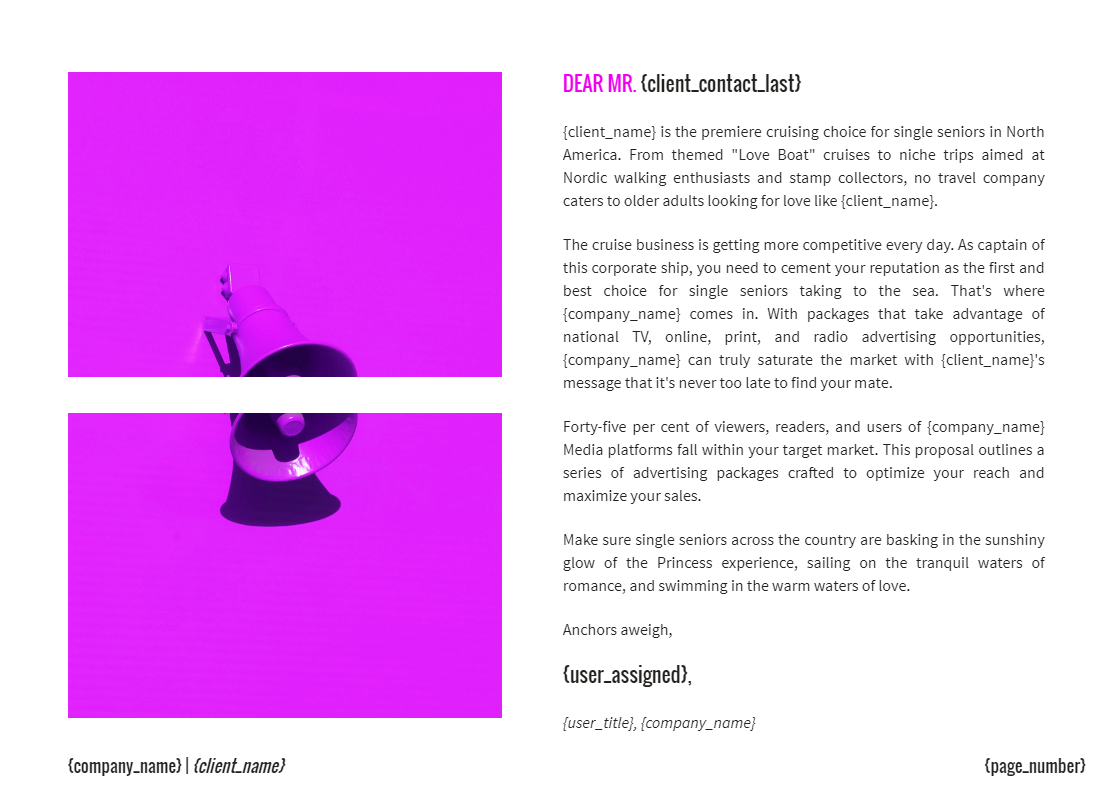
You can include the project goals and objectives of the client in the executive summary, in the project summary, or in a section dedicated just for this purpose.
You might write 75 - 150 words describing the goals, or utilize a bulleted list of 3-8 goals.
The approach section can go by a lot of different names, such as “solution” or “methodology.” In this section, you’re describing the strategy behind your approach. It sets the stage for the project details and budget to follow.
This is particularly important when winning over new clients who aren’t familiar with what sets your business apart from the competition.
A catering company might use this proposal page to talk about the sort of experience or quality of food they provide.
Meanwhile, a marketing company might include its brand ethos or core beliefs here.
While the previous section is about the strategy, this section is all about the specifics. Spell out exactly what you’ll do for the client.
Here’s what you might include in the project summary:
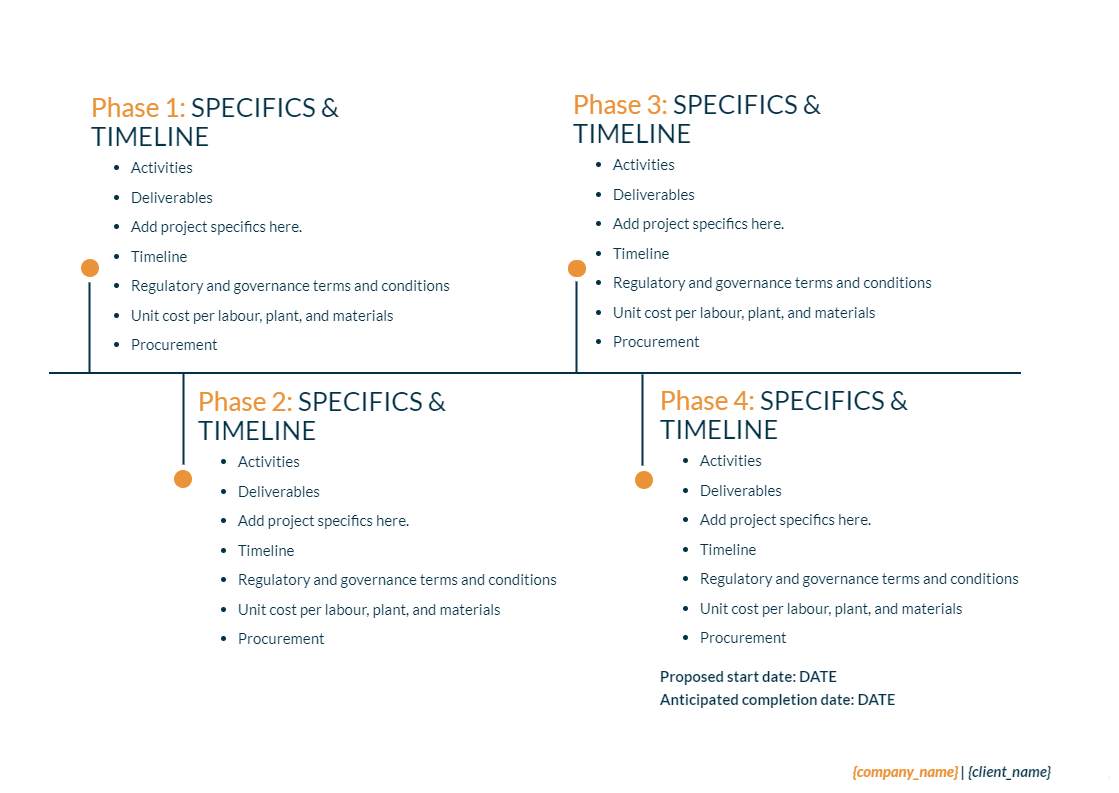
You can write an About Us page, an Our Team page, or both. An About Us page should include a description of what your company does, your target audience, and the results you provide. An Our Team page will feature bios of important people on your team.
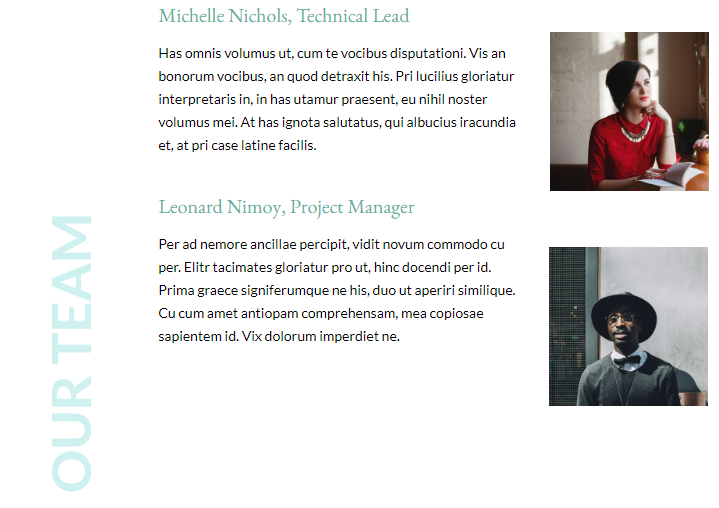
You need to spell out the project costs. Depending on the nature of your business, you might show a flat rate project total, your hourly rate alongside the number of estimated hours, or a variety of package options for the client to choose from.
Next up: terms and conditions. When using a proposal management software with e-signatures, your proposal can work as a binding contract. Include your master service agreement and allow the project summary to serve as the statement of work.
Prospective clients will need some reassurance to help them trust your business.
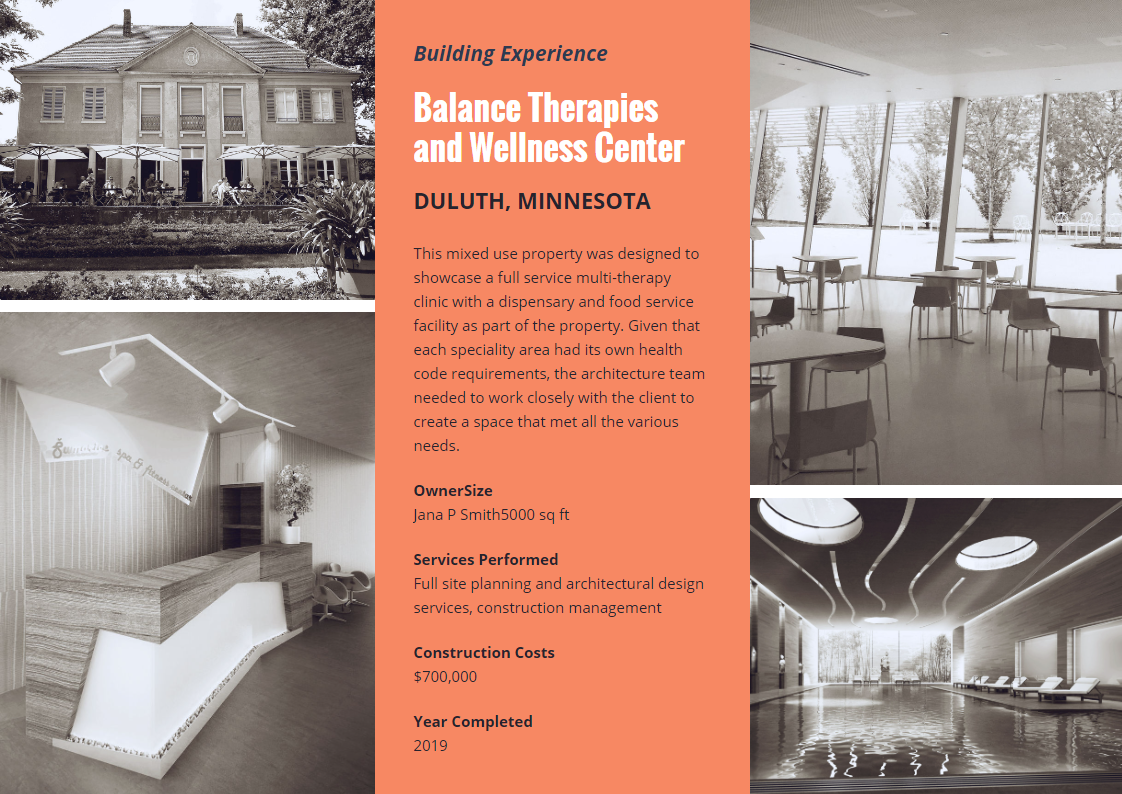
Ready to pitch a new project? Here’s a step-by-step process to create a winning project proposal.
The first step is to understand the client’s current challenges and goals. As part of your discovery process, you might conduct a single sales call, or several.
Some companies actually charge for a longer discovery or audit process, and use a proposal to sell that introductory service. They will then later upsell that client on a project based on their findings with a custom proposal. However, most firms conduct the discovery process for free and then make project recommendations in their first proposal.
Next, you’ll want to distill everything the client has shared with you. You might take some time to gather your notes, talk it through with a colleague, and then determine the most important objectives. These project objectives will guide all further decisions.
Now it’s time to decide which method or approach will lead to project success. If you have a templatized project process and always serve similar clients, you can offer your usual solution.
But if you offer custom work unique to each client, then you’ll need to decide on the approach. For example, an event planner might decide to offer event marketing, registration, setup, and breakdown services if a client doesn’t have any in-house resources, but they might only offer setup and breakdown if the client has in-house marketing and ticketing specialists.
Now that you’ve done your research and decided what to pitch to the client, it’s time to break the project down.
Determine the project costs or pricing options, break up work into phases, and clarify deliverables. You can jot this down on a piece of paper or work directly inside of a proposal template.
Write out your proposal and make sure that you’ve covered all of the bases. It’s worth noting that longer isn’t necessarily better. Through our analysis of 1 million proposals, we found that winning proposals have 7 sections and 11 pages on average.
Keep in mind that you can alter and rename these sections to match your services and unique brand voice. Leverage an AI writing generator to help brainstorm content while you work on the sections of your proposal.
Now it’s time to send the proposal. You can save time and reduce your software needs by using one software for both proposals and contracts. Just make sure that you’ve included your terms and conditions.
Proposals with e-signatures assigned to both the sender and recipient have a 426% higher closing rate. And if you sign the proposal first (before the client opens it), you’ll increase your chances of closing by a further 36.8%.
Be on hand to make changes per client requests, whether they want to change the project scope or adjust contractual language because of their picky legal team.
Being asked to revise a proposal isn’t necessarily a bad thing. In fact, proposals that are revised a couple of times are more likely to close.
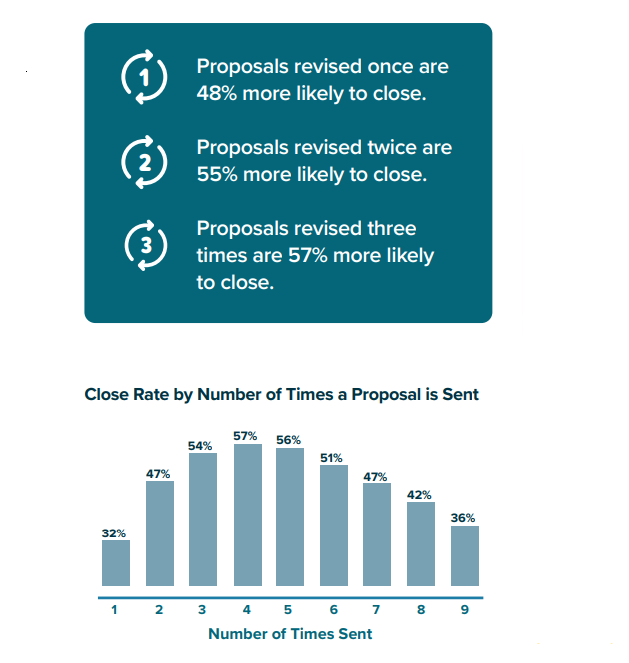
Need some inspiration? These project proposals offer examples of exactly what to include in your next pitch.
This printing proposal offers an excellent example of how to clearly communicate your pricing and offer interactive options. When we analyzed 1 million proposals sent with our platform, we found that proposals with fee tables have a 35.8% higher closing rate than those without and that proposals with editable quantities have an 18.5% higher closing rate.
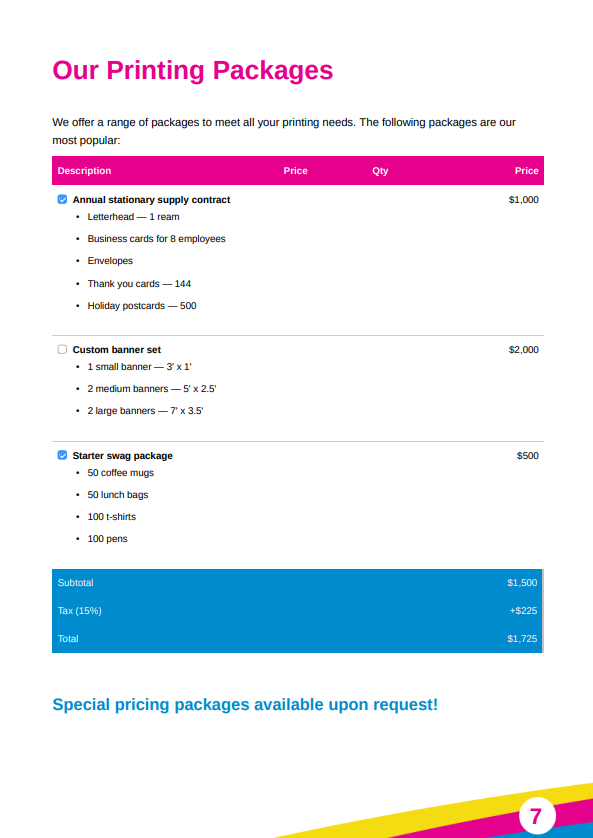
You can use this proposal template with your free trial of Proposify and easily customize it for your unique business offerings.
This example project proposal template includes these sections:
A project timeline is an important part of any project proposal. This marketing proposal template offers a great example of how to share this timeline in a simple format.
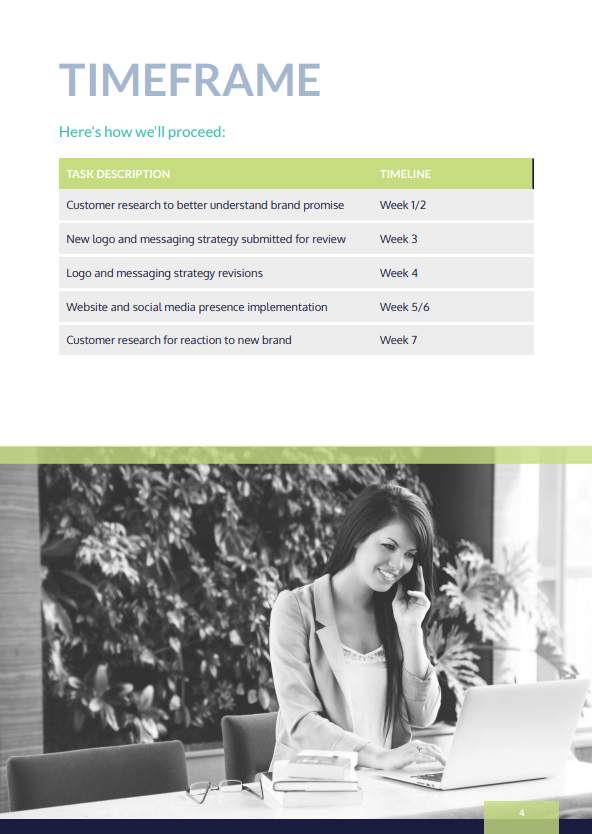
Break your project down into distinct steps so the client knows exactly what to expect.
This example proposal template includes the following sections:
Our next example is an accounting proposal.
This proposal stands out because it includes the client’s goals in the Project Summary section. See those short and sweet bullet points? They serve as a smart way to let the client know that you understand their goals and will be able to satisfy them.
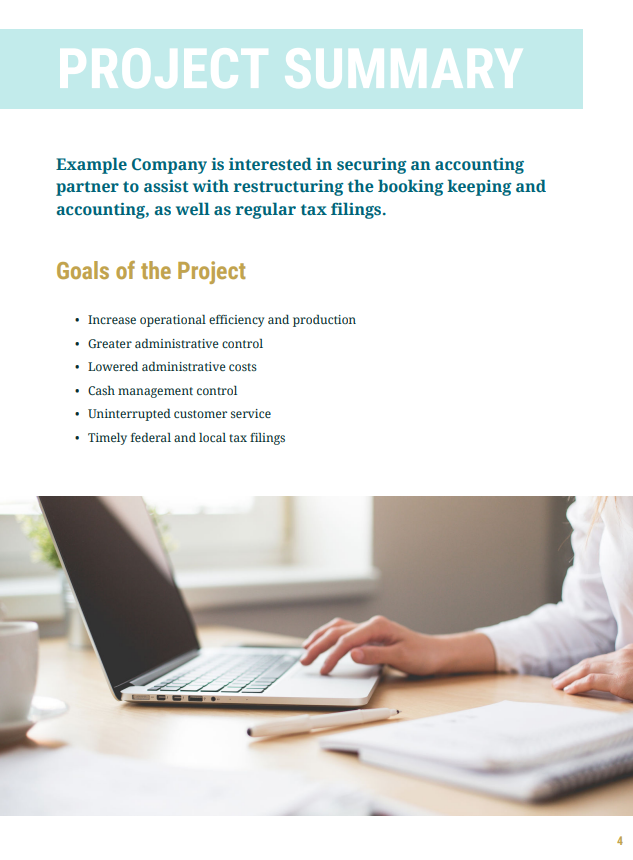 example in an accounting project proposal" width="633" height="860" />
example in an accounting project proposal" width="633" height="860" />
This proposal also includes a breakdown of work that is categorized into four different batches, or chunks: QuickBooks Startup, Data Migration, QuickBooks Data Build, Overall (throughout the project). You can use this example when breaking down a project into different stages or services.
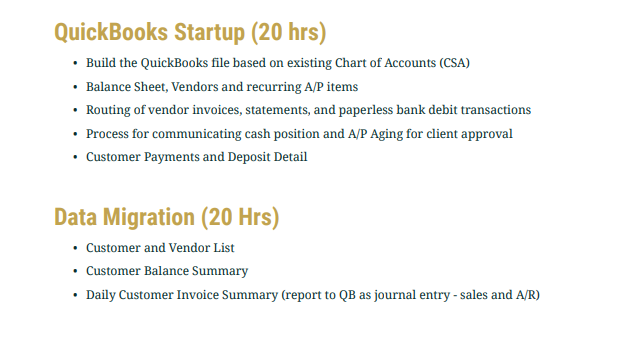
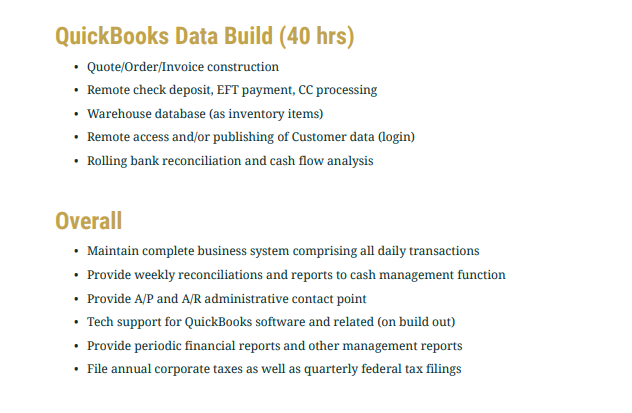
Access this accounting proposal template with a paid subscription or a free trial of Proposify.
The template includes the following sections:
Do you need to include exclusions in your proposals? If the type of work you offer is contingent on other service providers or lends itself to complications, then you might want to start adding exclusions. This can help protect your business from the many risks associated with project scope confusion or misaligned expectations.
This construction proposal template, available inside of Proposify, offers a perfect example of an exclusion section, which follows what is included in the project.
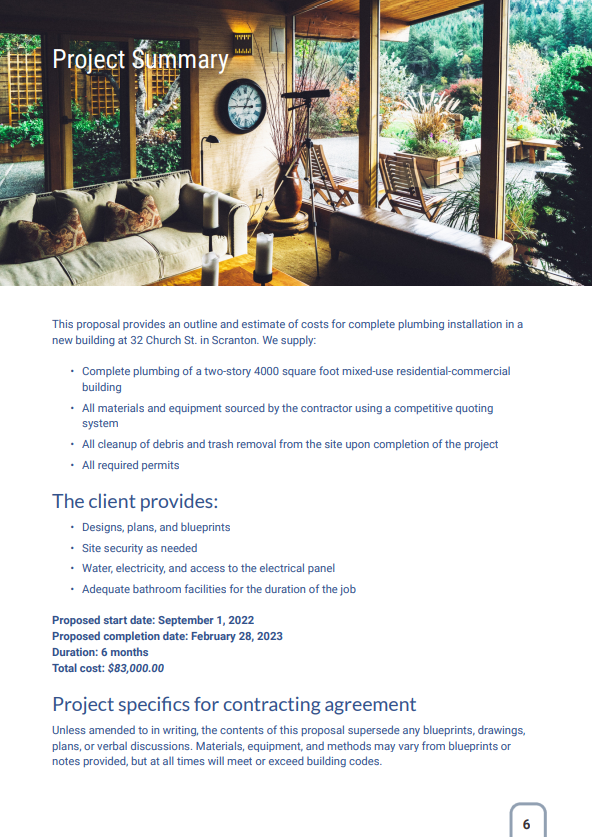
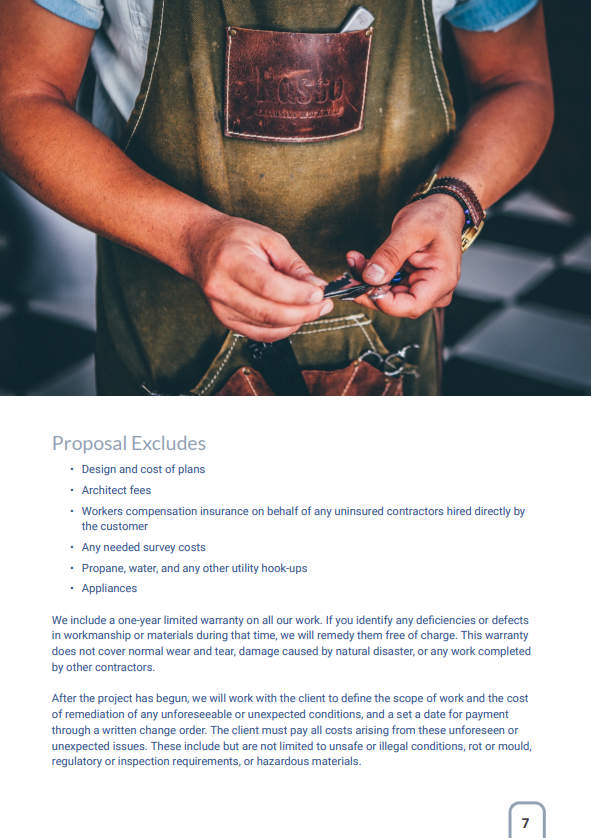
The project proposal template includes the following sections:
Event planning is complicated—that’s exactly why the event industry serves as a great example of how to charge for both hourly work and fixed costs at the same time.
You can access this event planning proposal template with your Proposify account (check it out with a free trial).
In the Budget section, the proposal kicks things off with a fee table including all of the hourly costs.
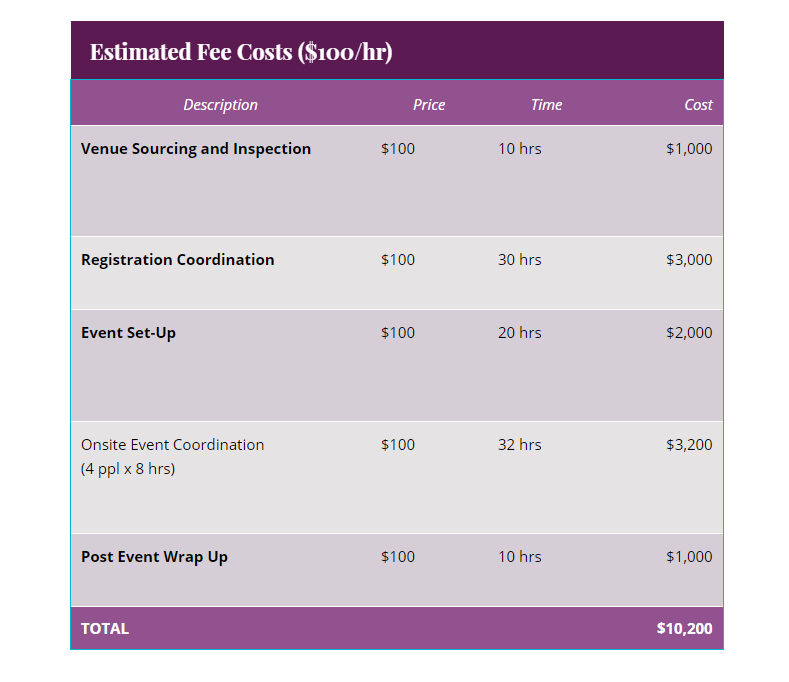 example in an event project proposal" width="789" height="682" />
example in an event project proposal" width="789" height="682" />
This project proposal also has a second fee table to estimate the hard costs, such as catering and photography, and the hourly costs and hard costs are then added up for the full project total.
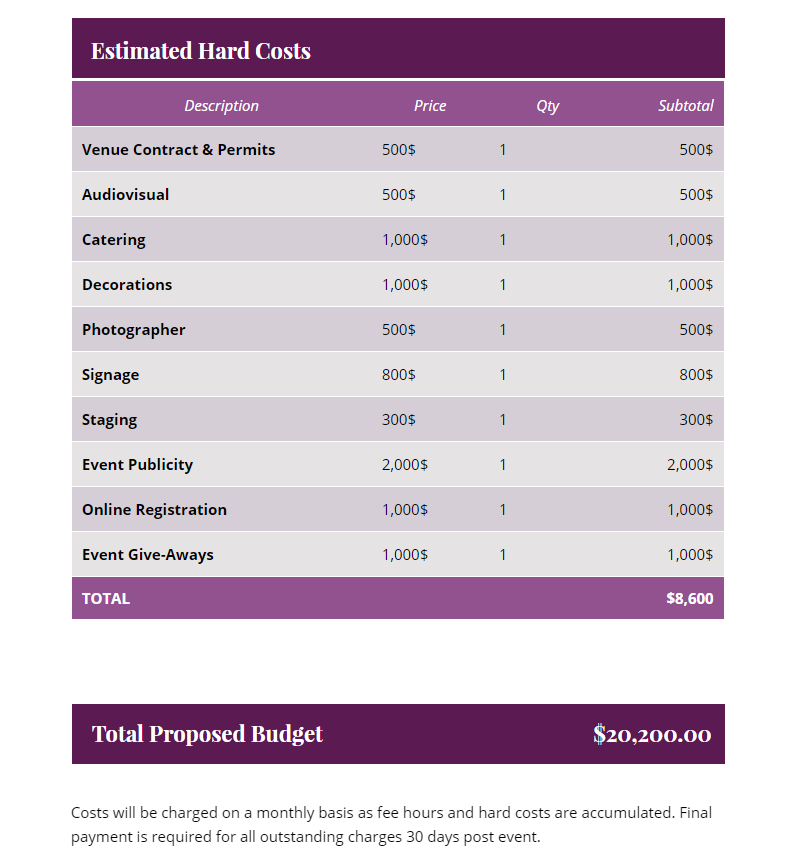 example in an event project proposal" width="791" height="860" />
example in an event project proposal" width="791" height="860" />
This template includes the following sections:
Writing a great proposal is a lot of work.
Here are some project proposal best practices that will help you save time and get better results:
An excellent project proposal should include the project roadmap, milestones, budget, and any supplemental information that will help the client really understand the value of the project and secure buy-in.
To make any proposal more likely to close, make sure you include multimedia content, pricing options, and e-signatures.
Proposify’s proposal templates, automated follow-ups, and viewing analytics can take your proposal closing game to a whole new level. Book a demo today.

Dayana Mayfield is a B2B SaaS copywriter who believes in the power of content marketing and a good smoothie. She lives in Northern California. Connect with her on LinkedIn here: linkedin.com/in/dayanamayfield/